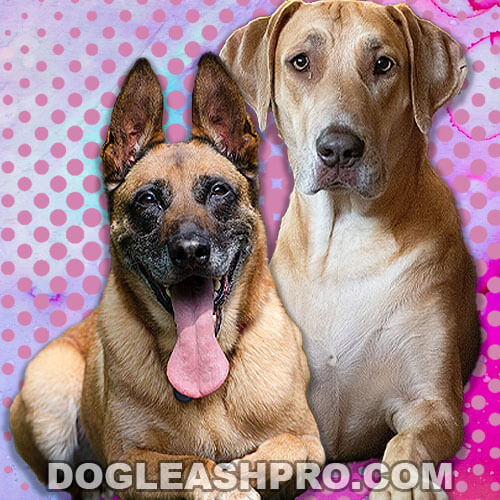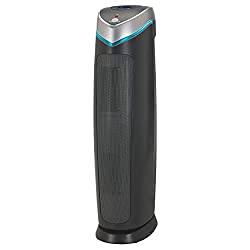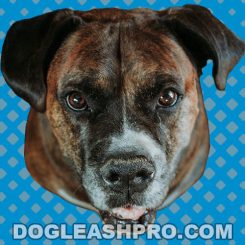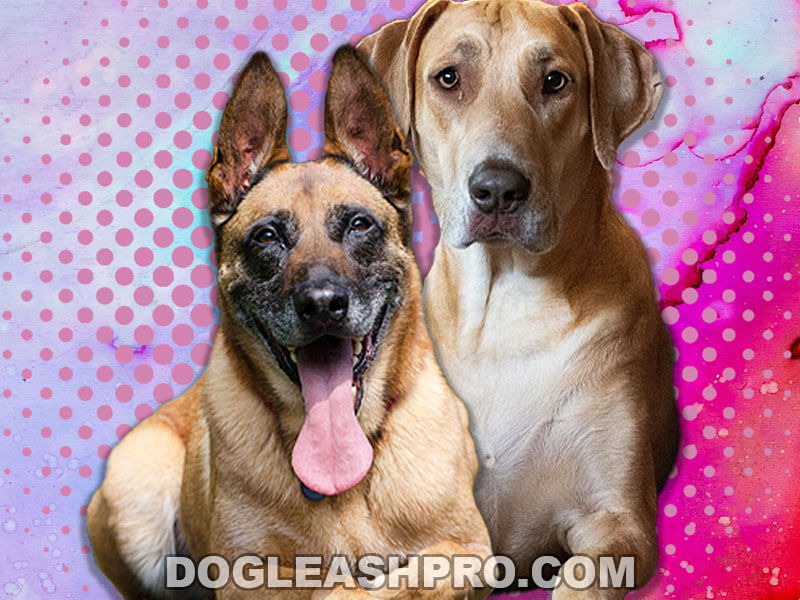
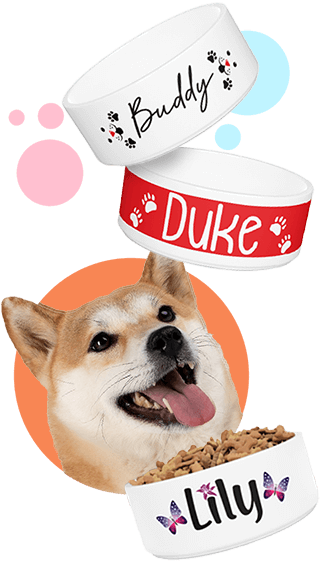
The Belgian Malinois Great Dane Mix is an exciting mixed breed gaining a reputation amongst canine enthusiasts. The hybrid of two relatively intelligent and loyal species, the Belgian Malinois Great Dane Mix is impressive with a strong body.
Whether you’re considering adding a dog to your family or want to learn more about the Belgian Malinois Great Dane Mix, this comprehensive guide will offer you everything you need to know about this fascinating hybrid.
Many often confuse the Belgian Malinois Great Dane Mix with the Belgian Malinois Pit Mix. While the two breeds are energetic and need physical exercise, they have distinct bodily and behavioral traits that differentiate them.
Table of Contents
Belgian Malinois Great Dane Mix: Breed Overview
| Other Names | Great Malinois, Malidane |
| Purity | Hybrid |
| Purpose | Guard Dog, Companionship |
| AKC Recognition | No |
| Size | Large |
| Weight | 60-140 Pounds |
| Height | 24-32 Inches |
| Coat Colors | Black, blue, fawn, brindle, merle |
| Child Friendliness | Good with children but requires socialization |
| Canine Friendliness | Good with other dogs, but if socialized |
| Training Difficulty | Moderate |
| Grooming Upkeep | Low to Moderate |
| Exercise Needs | High |
| Health | Prone to hip dysplasia |
| Lifespan | 8-12 years |
| Puppy Costs | $500-$1,500 |
RECOMMENDED: Great Dane Husky Mix (Complete Guide)
What is a Belgian Malinois Great Dane Mix?
The Belgian Malinois Great Dane Mix is a crossbreed of the Great Danes and the Belgian Malinois.
They are muscular, intelligent, and devoted dogs known to provide steadfast companionship to the right loving canine owners.
To understand the Belgian Malinois Great Dane Mix, let’s take a look at their parent breeds, focusing on their history and characteristics.
Great Dane history
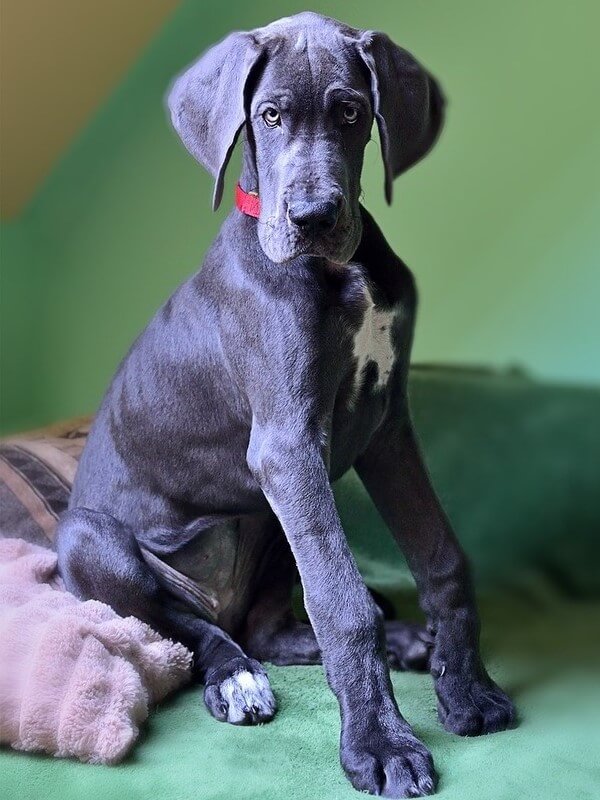
Great Danes have a fascinating history that spans centuries. These mild giants were initially bred in Germany as hunting dogs and used to take down wild boar and different animals.
The breed’s ancestors may include the Irish Wolfhound, English Mastiff, and Greyhound.
However, the modern-day Great Dane evolved in the 19th century through careful breeding and refinement.
Overall, Great Danes continue to be cherished by many because of their unique appearance and gentle personalities.
CHECK OUT: Great Pyrenees Great Dane Mix (Complete Guide)
Belgian Malinois history
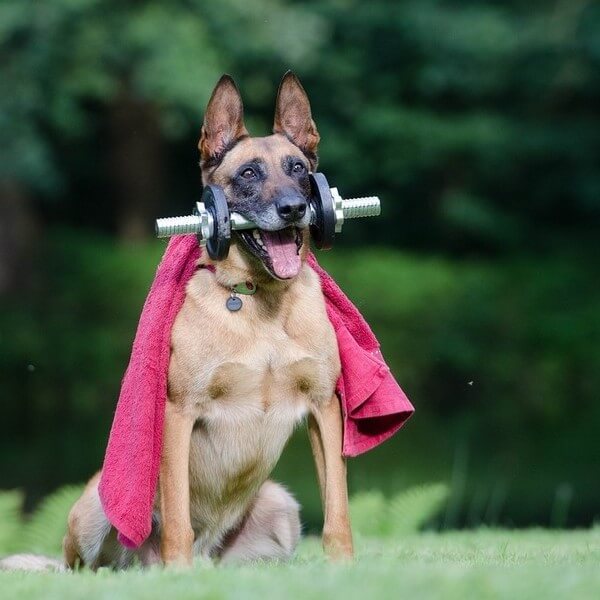
Belgian Malinois, also known as the Malinois, is a dog breed that originated in the Belgian city of Malines in the late 1800s.
This breed was initially domesticated for herding and guarding sheep.
Over the years, it became broadly recognized for its tremendous performance in police and army patrols. They are often used in law enforcement and navy operations due to their extraordinary sensory capabilities and high intelligence.
The Belgian Malinois has a robust, agile, and muscular body, which allows him to carry out various duties, including tracking, detection, seek and rescue, and safety.
Overall, Belgian Malinois are famous for their loyalty, intelligence, and trainability.
Great Dane vs Belgian Malinois
The main difference between Great Dane and Belgian Malinois is that Great Dane is larger, calmer, and are less active while Belgian Malinois is smaller, more active, intelligent, and requires a lot of physical activities.
Malinois Great Dane Mix physical appearance
A Belgian Malinois Great Dane mix blends the physical characteristics of his parent breeds. You can expect them to be large to giant size.
In fact, they stand at about 24 to 30 inches tall at the shoulder and weighs between 60 and 150 pounds.
Their coat is typically short and dense, and they can have a variety of colors, including fawn, red, mahogany hues, black, blue, brindle, or even harlequin.
The Belgian Malinois Great Dane mix may have erect or floppy ears, and their eyes are brown. Despite their substantial size, they often move with surprising grace and agility.
READ ALSO: Cane Corso Great Dane Mix (Complete Guide)
Great Dane Malinois Mix size, height, and weight
Male Belgian Malinois Great Dane Mixes are commonly larger and heavier than their female counterparts.
Typically, a male Malinois Great Dane Mix can weigh as much as a 140 pounds and reach a height of 32 inches, while females can weigh up to 120 pounds and reach a height of 28 inches.
Here’s a table that summarizes the size of the Belgian Malinois Great Dane Mix for both females and males:
| Size | Male | Female |
| Weight | 60-140 pounds | 50-120 pounds |
| Height | 24-32 inches | 22-28 inches |
Various Belgian Malinois and Great Dane Mix coat colors and types
Belgian Malinois Great Dane Mixes have different coat colors and markings depending on their parents.
The Great Dane comes in solid colors such as black, brown, fawn, and brindle, while the Belgian Malinois comes in black, brown, or white.
READ NEXT: Blue Merle Great Dane (Complete Guide)
Therefore, the Belgian Malinois and Great Dane Mix can come in any of the above colors. Some hybrids may also have distinctive markings, such as white streaks or brindle spots.
Note that the Belgian Malinois Great Dane Mix’s coat can change with age. For instance, some puppies develop more prominent markings and it changes when they become adults.
Great Dane and Belgian Malinois Mix temperament and personality
The Belgian Malinois Great Dane Mix can also be protective and territorial, making them notable guard dogs.
However, this trait can also cause aggression if they’re not socialized and trained at an early age.
Due to their size and energy levels, these dogs are often unsuitable for first time dog owners or households with small children.
Do Great Dane Mix Belgian Malinois make great family pets?
With proper training and socialization, the Great Dane Mix Belgian Malinois can indeed make a wonderful family pet, but their suitability largely depends on the family’s lifestyle and experience with dogs.
This hybrid will likely be large, energetic, and intelligent, combining the gentle nature of the Great Dane with the dynamic personality of the Belgian Malinois.
They would need a family committed to providing plenty of exercise, mental stimulation, and space to move around.
Additionally, early socialization and consistent, positive reinforcement-based training are crucial to ensure they develop into well-rounded pets.
Families with experience in handling larger, more active breeds would likely find this mix a rewarding addition to their homes.
However, for those unprepared for their potential size and energy, this hybrid breed could prove overwhelming.
CHECK OUT: Great Dane Doberman Mix (Complete Guide)
Are Belgian Malinois cross Great Dane aggressive dogs?
Some may assume that the Belgian Malinois cross Great Dane are aggressive due to their significant size, strength, and physical appearance.
However, this isn’t true. it isn’t fair to generalize the Belgian Malinois cross Great Dane as aggressive.
It’s important to note that neither the Belgian Malinois nor the Great Dane is inherently aggressive.
As with any canine, aggression results from a combination of genetic and environmental factors. The behavior of a Belgian Malinois and Great Dane mix, like any dog, largely depends on how they were raised and trained.
As always, early socialization and consistent, positive reinforcement-based training are key to raising a well-behaved and balanced Belgian Malinois cross Great Dane dog.
Great Dane and Belgian Malinois training
Great Danes and Belgian Malinois are both canine breeds that require continuous and robust training to ensure they’re nicely behaved and good companions.
Proper training is essential to set up rules and boundaries for these intelligent, sturdy-willed dogs.
Therefore, when training your Great Dane and Belgian Malinois, make sure to use high-quality reinforcement training strategies such as the following:
- Positive Reinforcement: This method involves rewarding the dog with treats, praise, or toys when they perform a desired behavior. The reward should be given immediately after the correct behavior, so your K9 friends understands what action is being rewarded.
- Clicker Training: This is a type of positive reinforcement where a clicker is used to signal to the dog that they’ve performed a correct action. The clicker sound is followed by a reward, helping the dog associate the sound with positive outcomes.
- Shaping: This technique involves rewarding behaviors that are close to the desired action and gradually requiring more accuracy. For instance, if you want your dog to sit, you might reward them first for simply bending their legs, then only reward when they fully sit.
- Lure-Reward Training: This involves using a lure (like a treat or a toy) to guide the dog into the desired position or action. Once they perform the action, they receive the lure as a reward.
- Target Training: This is similar to lure-reward training, but instead of a lure, a specific target is used. The dog is trained to touch or follow the target and is rewarded when they do so correctly.
- Cue-Reinforcement Training: This strategy involves associating a specific cue (like a command or a hand signal) with a behavior. The dog is rewarded when they correctly respond to the cue.
You may be interested in: Leash Training: How to Train Your Dog to Walk on a Leash
Remember that both consistency and patience are key in reinforcement training.
Make sure to keep the training sessions short and fun to keep your furry friend’s interested and prevent frustration. Taking breaks is just as important as it allows your furry friends to rest and recharge.
Great Dane x Belgian Malinois Mix exercise requirement
A Great Dane x Belgian Malinois Mix requires a lot of exercise and physical activities due to the energetic nature inherited from their Belgian Malinois parent.
While Great Danes are typically more laid back, the Belgian Malinois is a high-energy breed that needs plenty of physical activity and mental stimulation.
Therefore, the Great Dane x Belgian Malinois Mix will likely require at least 1 to 2 hours of daily exercise, which could include the following:
- Walking
- Running
- Playtime
- Hiking
- Agility training
These types of daily exercise helps to maintain their muscle tone, prevent obesity, and allow them to live happy, wholesome lives.
You can also add in puzzle games and obedience training to help stimulate them mentally.
The exact amount of exercise may vary based on the individual dog’s health, age, and personality.
However, due to their potential size, it’s also important to monitor their exercise as puppies and young adults to avoid putting too much strain on their developing joints.
As with any hybrid breed, it’s essential to recognize the workout requirements of Belgian Malinois Great Dane Mix puppies so they remain happy and healthy.
DON’T MISS: Great Dane Golden Retriever Mix (Complete Guide)
Belgian Malinois x Great Dane grooming and cleaning
Regular grooming and cleaning are essential to keep your Belgian Malinois x Great Dane healthy and clean.
A typical grooming routine for this breed includes brushing, bathing, nail clipping, and teeth cleansing.
Here is a table outlining the recommended frequency for each grooming needs:
| Grooming | Frequency |
| Brushing | 2-3 times a week. |
| Nail trimming | Once a month. |
| Teeth brushing | Daily. |
| Bathing | Once every 1 to 2 months. |
| Eye/Ear Care | Check weekly. |
Hair Brushing
The Belgian Malinois Great Dane Mix’s coat care will depend on which parent breed’s fur they inherit.
If they take after the Belgian Malinois, they will have a short, dense coat that sheds regularly, requiring brushing at least once or twice a week to manage loose hairs and keep their coat healthy.
However, if they inherit the Great Dane’s coat, they will still have a short, smooth coat, but it might be slightly less dense.
Regardless, regular brushing will help to distribute natural oils throughout their skin, remove dead hair, and keep their skin healthy.
Grooming is also a great bonding opportunity for both you and your canine friend.
You’ll want to use a slicker brush or a deshedding tool to help remove tangles and mattings.
Nail trimming
Trim the nails of a Belgian Malinois Great Dane Mix once a month to prevent them from causing discomfort or pain.
Using a nail clipper or a dog nail grinder can be powerful in keeping the proper nail length.
Teeth brushing
Brushing your furry friends’ teeth daily can save them from dental problems. Common dental issues include tartar buildup and gum ailment.
When brushing your puppy’s teeth, be sure to use toothbrush and toothpaste specifically designed for dogs.
Regular teeth brushing can help preserve their oral health.
Bathing
Bathing a Belgian Malinois Great Dane Mix should be once every 1-2 months.
When bathing your pooch, be sure to use a dog-friendly shampoo that contains organic and natural ingredients to avoid dryness and irritation.
Overbathing them can strip their skin of natural oils and cause itching and flaking.
Do Belgian Malinois Great Dane Mix shed?
Shedding is one of the biggest concerns for Belgian Malinois Great Dane Mix owners. These dogs experience moderate to heavy shedding because of the thick coat they inherit from both parent breeds.
To manage the shedding, it’s a good idea to invest in a powerful and durable vacuum cleaner with a HEPA filter.
HEPA stands for High Efficiency Particulate Air and HEPA filters can trap allergens and puppy dander, which can assist in lessening the amount of fur and small particles in the air.
Additionally, frequent grooming (as discussed above) can help manage their shedding and maintain a healthy coat.
Are Great Dane Belgian Malinois Mix hypoallergenic?
No, the Belgian Malinois Great Dane Mix is not hypoallergenic. Both parent breeds, the Great Dane and the Belgian Malinois, are known to shed moderately, which can trigger allergies in those that have canine allergies.
In fact, there is no such thing as a 100% hypoallergenic dog breed.
If you or anyone in your family has mild canine allergies, it’s a good idea to place several air purifiers with HEPA filters throughout your home.
That’s because air purifiers can significantly reduce the number of allergens in your home.
Dog allergens are tiny particles that can become airborne, and these particles can be effectively captured by a HEPA filter.
These filters are designed to trap 99.97% of particles that are 0.3 microns or larger, which includes common allergens like dog dander, fur, and saliva.
Therefore, using a HEPA air purifier can help to improve your indoor air quality, decrease the likelihood of allergic reactions, and create a healthier and more comfortable living environment for both you and your K9 friends.
Belgian Malinois Mix with Great Dane food and diet
When it comes to feeding your Belgian Malinois Great Dane, a well-balanced and nutritious diet is essential to ensure their overall health and well-being.
Due to their size and active nature, they need food that is rich in protein, healthy fat, and essential nutrients and minerals.
Look for dog food that is particularly formulated for large dog breeds and contain glucosamine and chondroitin to aid in joint health.
If you’re still unsure, we highly recommend that you consult with your dog’s vet to decide the best feeding plan for your Belgian Malinois Great Dane Mix. This will ensure that they receive the nutrients they need to thrive.
Belgian Malinois Great Dane Mix health issues
A Belgian Malinois and Great Dane mix could potentially inherit health issues that are common in either of the parent breeds.
If you have a hybrid breed and want to know in advance what health issues he or she may be predisposed to, using a dog DNA and health detection test kit will be helpful.
Here are five (5) health issues to look out for if you have a Belgian Malinois Great Dane Mix:
Hip dysplasia
Larger dog breeders like the Belgian Malinois and Great Dane Mix are prone to hip dysplasia. Hip dysplasia is a common skeletal condition that occurs when the ball and socket of the hip joint are either not properly aligned or develop abnormally.
This can lead to discomfort, pain, and eventually arthritis.
Both parent breeds, particularly the Great Dane, are known to have a predisposition towards hip dysplasia.
Symptoms of hip dysplasia can include decreased activity, lameness, difficulty standing up or climbing stairs, and a noticeable change in gait.
Early diagnosis and intervention, which could include weight management, physical therapy, medication for pain management, and in severe cases, surgery, can greatly improve the quality of life for any dog with this condition.
Gastric Dilatation-Volvulus (GDV) or Bloating
Bloat, or gastric dilatation-volvulus (GDV), is a serious and life-threatening condition that can potentially affect a Belgian Malinois and Great Dane Mix.
This is because the Great Dane is one of the breeds that is most susceptible to bloating.
Bloat occurs when the dog’s stomach fills with gas and possibly twists, preventing the gas from escaping and causing severe discomfort.
This condition can lead to a rapid decline in health. If this is not treated immediately, it can be fatal.
Symptoms of bloating include the following:
- Swollen abdomen.
- Unproductive retching.
- Restlessness.
- Discomfort.
- Drooling.
- Dry heaving.
To prevent bloating, you can feed your furry friends smaller, more frequent meals and avoid vigorous exercise around meal times.
If you suspect that your K9 companion is experiencing bloating, head to your nearest emergency veterinary hospital. Immediate medical attention is crucial.
Coronary heart issues
Coronary heart issues, specifically dilated cardiomyopathy, can be a potential health concern in a Belgian Malinois and Great Dane Mix.
This is because the Great Danes are particularly predisposed to this condition.
Dilated cardiomyopathy is a disease of the heart muscle where it becomes thin and weak, leading to less efficient pumping of blood throughout the body.
Over time, this can result in heart failure.
Symptoms of dilated cardiomyopathy include the following:
- Lethargy.
- Rapid breathing.
- Coughing.
- Episodes of collapse.
Regular veterinary check-ups are crucial for early detection and management of this condition, which might include medication to help improve the heart’s function, dietary adjustments, and lifestyle changes.
As always, a balanced diet and regular, appropriate exercise can contribute to overall heart health.
Eye problems
A Belgian Malinois and Great Dane Mix could potentially inherit eye problems common to either of the parent breeds.
Belgian Malinois can be prone to progressive retinal atrophy (PRA), an inherited disease that leads to the degeneration of the retina and eventual blindness.
On the other hand, Great Danes can sometimes develop conditions like entropion, where the eyelid rolls inward, causing irritation.
Symptoms of eye issues can include redness, excessive tearing, squinting, or noticeable changes in vision.
If you notice any of the above symptoms in your K9 friends, we highly advise that you contact your vet.
Overall, regular eye examinations by a vet is a must because it can help to detect any issues early, and treatment options can range from medication to surgery, depending on the specific condition.
Allergies
Allergies in a Belgian Malinois and Great Dane Mix could manifest as skin issues, digestive problems, or respiratory symptoms, depending on the type of allergen.
These dogs could inherit these allergies from either parent breed.
Common allergens can include certain types of food, environmental factors like pollen or dust mites, or even fleas.
Symptoms might include itchiness, red or inflamed skin, ear infections, vomiting, diarrhea, or sneezing.
If you notice any of the above symptoms in your Belgian Malinois and Great Dane Mix, be sure to contact your vet as soon as you can.
The vet can help identify the allergen through elimination diets or allergy tests. Your vet may even suggest appropriate treatments option including diet changes, medications, or lifestyle adjustments to reduce exposure to the allergen.
Great Dane Belgian Malinois Mix lifespan
The Great Dane Belgian Malinois Mix has an average lifespan of 8 to 12 years. With proper care and attention, they may be able to live longer.
Regular daily exercise, eating healthy food with regular vet checkup can all contribute to your canine friends living longer.
It’s also worth noting that the lifespan of each Belgian Malinois Great Dane Mix differs depending on their genetics, environment, and lifestyle.
Belgian Malinois Great Dane Mix breeders
If you are looking for a Belgian Malinois Great Dane Mix breeder, you’ll want to research first and find reputable, legitimate, and responsible breeder.
Responsible breeders are those that focus on prioritizing the health and temperament of their puppies.
A practical approach to finding an ethical breeder is through referrals from different dog owners. You’ll want to avoid puppy mills and pet stores.
Once you have identified potential breeders, it’s also important to contact them and ask them questions about their breeding practices, health testing, and all necessary information before making the decision.
A responsible breeder should be happy to answer any of your questions and hand you all of the important information and paperwork so you can make the best decision.
Rescue organizations and shelters might also have mixed breed puppies available for adoption.
Belgian Malinois Great Dane Mix puppy
As discussed above, finding a Belgian Malinois Great Dane Mix puppy requires research and patience.
Once you’ve located your puppy, it’s important to puppy-proof your home before their arrival.
Start by removing any items that could be dangerous, like toxic plants, cleaning supplies, and small objects that a puppy could choke on.
As we know, puppies love to chew so keep those electrical cords out of their reach.
Secure cabinets and trash cans to prevent curious pups from getting into something they shouldn’t.
Set up a safe and comfortable space for your new puppy. This could be a crate or a gated area, where they will have their bed, toys, and water.
Make sure all family members understand the rules for interacting with your puppy, such as not disturbing them while they are eating or sleeping.
Finally, take a look at your yard. It should be securely fenced with no gaps or holes to prevent a puppy from escaping.
Many dog owners will install a wireless dog fence to keep their pups safe.
Remove any toxic plants, and make sure there are no harmful chemicals or materials that the puppy could access.
With these preparations in place, you’ll be ready to welcome your new Belgian Malinois Great Dane Mix into a safe and comfortable home.
How much does a Belgian Malinois mix cost?
On average, a Belgian Malinois mix can cost anywhere from $500 to $2000. However, the Belgian Malinois Great Dane Mix, can be a bit pricier because of their size.
Remember that purchasing a dog is a long-term commitment, and you must factor in the extra cost of food, grooming, and vet care.
| Type of Initial Expenses | Average Cost | Find it here: |
| Food and water bowls | $15 – $30 | Doggy bowls |
| Collar and a leash | $30 – $50 | Dog collar |
| Dog beds | $50 – $180 | Doggy beds |
| Crate | $100 – $300 | Dog Crate |
| Grooming supplies | $40 – $80 | Grooming Supplies |
| Food and training treats | $70 – $150 | Puppy/dog food & treats |
| Microchipping | $35 – $50 | |
| Spaying/Neutering | $100 – $300 | |
| Initial wellness exam | $100 – $300 | |
| Vaccinations | $75 – $150 | |
| Deworming | $50 – $100 | Canine Dewormer |
| Dog license | $10 – $20 | |
| Miscellaneous | $20 | |
| Total cost | $700 – $1,800 |
Belgian Malinois Great Dane Mix price
The price of a Belgian Malinois Great Dane mix puppy can vary widely, depending on factors such as the breeder’s reputation, the parents’ pedigree, and the region.
On average, you could expect to pay anywhere from $500 to $2000 or more for this mixed breed puppy.
Places to find Great Dane Belgian Malinois Mix for sale
If you are interested in purchasing a Great Dane Belgian Malinois Mix, here are two reputable breeders you can reach out to:
Blue Mountain Great Danes (bluemountaingreatdanes.net)
Blue Mountain Great Danes is a breeder located in Shermans Dale, Pennsylvania. They specializes in breeding Great Danes and Great Dane hybrids, including the Belgian Malinois Great Dane Mix.
They have been breeding for years and focus on producing healthy, happy, and well-socialized puppies.
PKY Danes (pkydanes.com)
PKY Danes is a breeder located in Conroe, Texas. They have over 40 years of experience in breeding quality European Great Danes.
You can reach out to them and ask if they have breed Great Dane hybrids such as the Belgian Malinois Great Dane Mix.
They prioritize the health and welfare of their dogs and puppies, and offer a health guarantee for their puppies.
No matter which breeder you choose, be sure to do your research and ask of questions before making a purchase.
Belgian Malinois Great Dane Mix: Pros and Cons
Here are the pros and cons of owning a Belgian Malinois Great Dane Mix.
| Pros | Cons |
| Loyal | Can be Stubborn |
| Intelligent and Trainable | Require lots of exercise |
| Protective and Fearless | Prone to separation anxiety |
| Low Shedding Coat | Have an independent streak |
| Great Watchdog | Can be Aggressive with other dogs |
| Highly Affectionate | Large size can be challenging |
Is the Great Dane Belgian Malinois Mix right for me?
The Great Dane Belgian Malinois Mix can make a wonderful companion for the right owner.
This breed combines the loyalty, intelligence, and energy of the Belgian Malinois with the gentle nature of the Great Dane.
However, potential owners should be prepared for a large dog that requires plenty of exercise, mental stimulation, and space to move.
Also, be aware of potential health concerns and the commitment to regular veterinary check-ups.
If you have the time, space, and resources to devote to this unique and loving breed, the Great Dane Belgian Malinois mix could be a great fit for you.
Related Questions
Some of the best breeds to mix with a Belgian Malinois are German Shepherd and Labrador Retriever.
No, there is no difference between Malinois and Belgian Malinois. Malinois is short from of the full breed name, Belgian Malinois or Belgian Shepherd Malinois.
Those who cannot commit to providing sufficient exercise, socialization, and training should not own a Belgian Malinois. That’s because a Belgian Malinois is highly energetic and requires both mental and physical stimulation.
Belgian Malinois are not an inherently aggressive breed, but due to their high energy levels, intelligence, and strong working drive, they can display aggressive behaviors if not properly trained, socialized, or if they don’t receive adequate physical and mental stimulation.
Navy SEALs use Belgian Malinois due to their intelligence, trainability, and high drive, making them well-suited for military and law enforcement work.
Belgian Malinois are known for their strength, athleticism, and agility. However, whether they are the strongest dog is subjective.
Belgian Malinois are known for their loyalty and do not typically “turn on” their owners. However, like any dog, lack of training and socialization, neglect, and abuse can lead to behavioral issues including aggression. It’s important to treat and train your Belgian Malinois with respect, consistency, and positive reinforcement to foster a healthy bond.
The German Shepherd is considered the closest breed to the Belgian Malinois, given their similar size, appearance, work ethic, and roles in working fields such as police, military, and search and rescue.
Yes, Belgian Malinois can get along with other dogs if they are properly socialized during puppyhood.
A Dutch Malinois is a cross between a Dutch Shepherd and a Belgian Malinois.
Yes, Belgian Malinois can get along with other animals if they are properly socialized during puppyhood. Since they have a high prey drive, you’ll want to monitor them when they are around small pets like cats and rabbits.
DISCLAIMER: THIS WEBSITE DOES NOT PROVIDE MEDICAL ADVICE
The information, including but not limited to, text, graphics, images and other material contained on this website are for informational purposes only. No material on this site is intended to be a substitute for professional veterinary advice, diagnosis, or treatment. Always seek the advice of your veterinarian or other qualified health care provider with any questions you may have regarding a medical condition.
Resources:
https://gdca.org/the-great-dane/health-and-research/
https://vgl.sf.ucdavis.edu/test/behavior-propensity-belgian-malinois

With over five years of specialized experience as an animal writer, my expertise lies in dog nutrition, health, behavior, grooming, and training. I am dedicated to delivering helpful and informative content that caters to the well-being of our furry friends. My primary goal is to empower pet owners with knowledge and ensure our canine companions thrive in health and happiness. In my free time, I love volunteering at local dog rescue centers.
